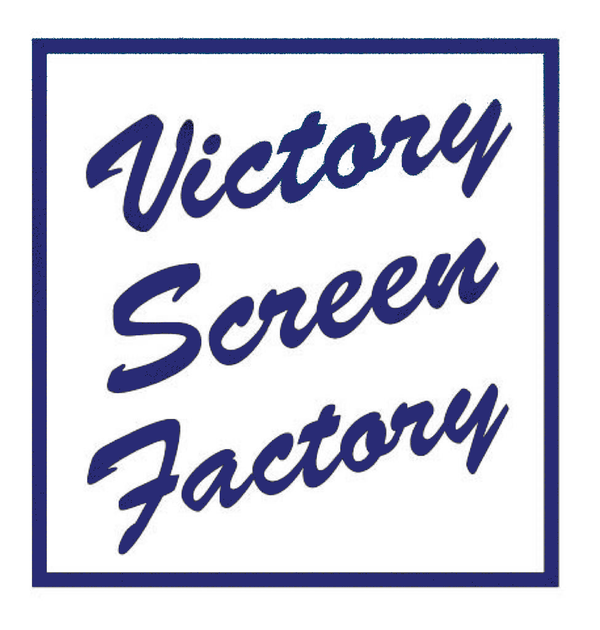
Essential Products for Your Screen Printing Hustle
Share
Screen printing has become a popular method for creating custom apparel, accessories, and promotional items. Whether you're a hobbyist or aspiring entrepreneur, having the right equipment and materials is crucial to ensuring high-quality prints and a successful screen printing hustle. In this article, we'll guide you through the essential products you need to kick-start your screen printing journey.
Understanding Screen Printing
What is Screen Printing?
Screen printing, also known as silk screening, is a versatile printing technique that involves transferring ink onto a substrate through a mesh screen. Each color in the design requires a separate screen, allowing for vibrant and durable prints on various surfaces. Read more about screen printing history here.
Benefits of Screen Printing
Screen printing offers unmatched durability, vibrant colors, and a professional finish. It's ideal for producing bulk orders and intricate designs, making it a favorite among clothing brands, artists, and businesses.
Must-Have Equipment
To excel in screen printing hustle, investing in the following equipment is essential:
Screen and Frame
Screens with stretched mesh and frames are the foundation of screen printing. Choose frames with appropriate tension and mesh count for your desired print quality. Unveiling the Construction and Suppliers of Screen Printing Screens
Squeegee
A squeegee is used to push ink through the screen onto the substrate. Opt for different blade types and sizes to accommodate various designs and inks. The Ultimate Guide to Choosing the Right Screen Printing Squeegee
Ink
Select high-quality screen printing inks that adhere well to your chosen substrates. Water-based and plastisol inks are popular choices, each with its unique benefits.
Exposure Unit
An exposure unit is crucial for creating screen stencils. It transfers the design onto the screen by exposing it to UV light, ensuring precise and detailed prints.
Drying Racks
Properly drying printed items prevents smudging and ensures ink longevity. Drying racks allow efficient drying of multiple prints simultaneously.
Quality Substrates
Importance of Substrates
Choosing the right substrate influences print quality. High-quality fabrics, paper, and materials ensure your prints look professional and last longer.
Types of Substrates
Explore various substrates such as cotton, polyester, blends, paper, and even wood. Each material interacts with ink differently, so select substrates that complement your designs.
Essential Tools
Emulsion and Coater
Emulsion is used to create screen stencils. A coater helps evenly apply emulsion, ensuring consistent stencil thickness for accurate prints. The Benefits and Use of Ulano Screen Printing Emulsions
Light Table or Exposure Booth
A light table or exposure booth aids in precise screen exposure. It helps cure emulsion and create detailed stencils, leading to sharp prints.
Cleaning Supplies
Proper cleanup is vital. Invest in screen cleaning brushes, reclaiming chemicals, and a washout booth to maintain your screens and equipment. What Screen Printing Chemicals Do You Need? An In-Depth Overview
Choosing the Right Ink
Types of Inks
Water-based inks are eco-friendly and provide a soft feel, ideal for garments. Plastisol inks offer vibrant colors and excellent opacity, perfect for dark fabrics.
Color Selection
Understanding color theory helps you select ink colors that pop and complement each other. Experiment with color combinations to create visually appealing designs.
Design Software and Artwork
Vector vs. Raster Graphics
Vector graphics (e.g., Adobe Illustrator) are ideal for screen printing as they maintain quality at any size. Convert or create designs in vector format for sharp prints.
Design Preparation
Prepare your artwork with precise dimensions and color separations. This ensures your design translates accurately onto different screens.
Setting Up Your Workspace
Layout and Organization
Organize your workspace for efficiency. Designate areas for screen prep, printing, drying, and clean-up to streamline your workflow.
Proper Ventilation
Screen printing involves chemicals and inks that emit fumes. Ensure proper ventilation to maintain a safe and comfortable workspace.
Marketing and Selling
Building Your Brand
Create a brand identity that resonates with your target audience. Consistent branding across your products and marketing materials establishes credibility.
Online and Offline Sales
Sell your prints through e-commerce platforms and at local markets or events. Leverage social media to showcase your work and connect with customers.
Maintenance and Upkeep
Cleaning and Storage
Regularly clean screens, squeegees, and other tools to prolong their lifespan. Store screens in a dry, dark area to prevent emulsion breakdown.
Equipment Maintenance
Follow manufacturer guidelines for maintaining your equipment. Regular maintenance ensures consistent print quality and prevents breakdowns.
Conclusion
Starting a screen printing hustle requires the right products, a solid understanding of the process, and a passion for creating stunning prints. By investing in top-notch equipment, quality substrates, essential tools, and mastering the printing process, you can turn your passion into a thriving business. Remember, consistent practice and a commitment to continuous improvement are key to achieving success in the world of screen printing.
FAQs
Q1: Can I use any type of ink for screen printing? A: While various inks are available, water-based and plastisol inks are the most commonly used for screen printing due to their compatibility with different substrates.
Q2: What's the difference between screen printing and other printing methods? A: Screen printing involves pushing ink through a mesh screen, allowing for vibrant and durable prints on various materials. Other methods like digital printing may not offer the same level of color vibrancy and longevity.
Q3: How can I ensure my designs are aligned properly during printing? A: Proper screen registration and design alignment tools like registration marks and pins help ensure accurate print placement.
Q4: Can I start screen printing at home? A: Yes, you can start screen printing at home with a compact setup. However, ensure proper ventilation and safety measures, especially when working with chemicals and inks.
Q5: Is screen printing cost-effective for small quantities? A: Screen printing is most cost-effective for bulk orders due to setup costs. While it's possible to print small quantities, the per-unit cost may be higher compared to other methods for very limited quantities.
